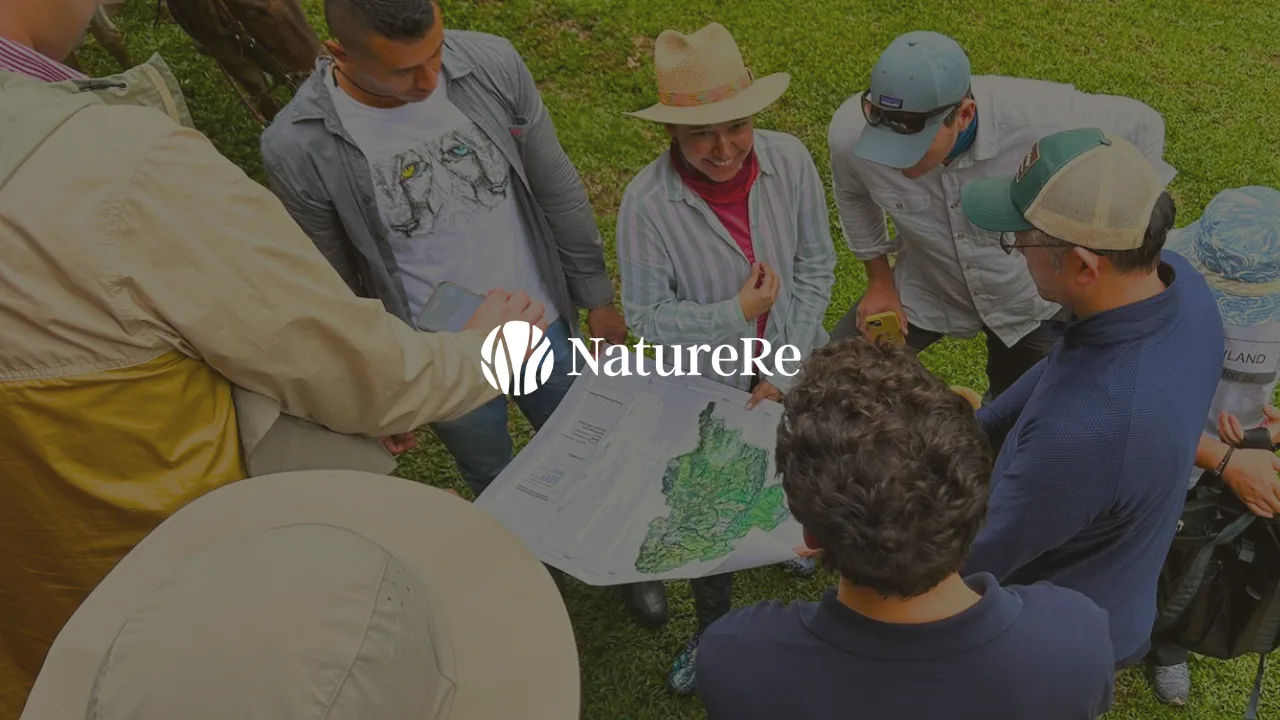Ackron Case Study #1 - Measuring Woodland Carbon
The first in our series of case study posts looking at the Ackron Mixed Woodland project in northern Scotland. Providing practical examples of the value of remote sensing approaches for forest carbon measurement and monitoring.
Case Study
Project Development
Carbon Credits
Apr 6, 2022
Emily Houston

The subjects of carbon credits and natural capital are cropping up with increasing frequency. With the proliferation of corporate and national net-zero targets, there is a growing recognition of the vital role of nature-based solutions for large-scale carbon removal. On the back of soaring corporate demand, the voluntary carbon market is set to scale by as much as 50x by 2030. The sale of carbon credits could provide much-needed finance for reforestation and ecosystem restoration, but it is vital that buyers be able to discern quality and monitor projects if that money is to achieve genuine climate and ecological impact.
So, how do we fit into all this? Treeconomy is a rapidly growing nature-based carbon removal company. We are using remote sensing and AI technology to bring needed trust and transparency to the nature-based voluntary carbon market. It’s a market that has long been regarded as the 'wild west' and (often deservedly) linked with greenwashing claims. We are building confidence in nature to catalyse climate finance that genuinely combats climate change, restores biodiversity, and improves rural livelihoods.
To explain – and practically illustrate – some of the ways our measurement and monitoring technology set is bringing rigour to forest carbon markets, we’ve decided to share a case study.
This blog series will delve into our work at a woodland project in Scotland: Ackron Mixed. We will be comparing our own results with those obtained by conventional, manual methods, to concretely highlight the value of embracing new technology. We will review how our analysis revealed sources of measurement inaccuracy and inefficiency – and why this is important for the voluntary carbon market.
The Projects
Ackron Mixed is the oldest project in the UK Woodland Carbon Code (WCC) and is located near Melvich, in the very north of Scotland. Before being planted with a mix of conifers and native broadleaves in 2000, the sweeping moorland was used for sheep grazing. Planting at Ackron was done with intentional spacing to allow for habitat expansion of UK priority species, including Black Grouse, Hen Harriers, and Short-eared Owls. Large swathes of space were also left deliberately unplanted to support non-forest and transitional habitats for various species.
The project was registered with the WCC – the primary quality assurance standard for woodland creation projects in the UK – and verified by an independent validation/verification body (VVB). These VVBs are accredited by the UK Accreditation Service to assess projects according to the WCC’s protocols and ensure a project's carbon stock (either actual or predicted) is correct within a reasonable level of certainty.
We became involved in this project after being awarded funding from the Innovate UK Sustainable Innovation Fund (read more about this here). The funding allowed us to take our technology out into the field and undertake R&D. Ackron Mixed at the time was going through its delayed 15-year verification - the second verification since planting in 2000. As a mature project undergoing manual assessment, it posed an excellent opportunity for us to compare our results to those derived by conventional methods.

How have carbon assessments been done to date?
Traditional forestry carbon stock assessment methods can vary depending on the nature of a particular project (size, number of trees, and density of planting). Any assessment intends to estimate the carbon stock of a woodland. The process can get complex, involving many calculations, equations, and conversions from measurements to tree-specific 'tariffs', full detail can be found in the WCC Carbon Assessment Protocol. So to summarise, we have listed some of the main steps below.
- Clearly define the area to be assessed - vital to ensure you are clear on what boundaries define the project area.
- Appropriately sub-dividing the area into stand sections with distinct characteristics (strata) and establishing sample plots - ensures manual samples will cover areas of the woodland with varying features.
- Count and identify species for all trees within the plot
- Use a tape measure (D-tape) to measure trunk diameter at breast height (dbh) for all viable trees
- Measure a sub-sample of trees within each plot for total height and other relevant variables, as appropriate (eg. crown width)
- Estimate tree biomass through the use of standard allometric relationships – equations that relate dbh, height, or other growth parameters to overall biomass (Such equations are commonly borrowed from research connected to commercial forestry.)
- Estimate tree carbon stocks from biomass by using reference values for carbon density
- Estimate the number of trees across the whole site by scaling up the number counted in the sample plots (multiplying sample plot density by project area).
- Scale-up tree and plot-level estimates to the stand and overall project level (multiplying by estimated tree count per stratum and summing the sub-totals)
The process is traditionally time-consuming and highly manual (and therefore costly) – requiring extensive in-field surveying by human auditors. From defining sample plots, counting and measuring trees, and selecting appropriate factors and equations, human error is possible at all stages, and parts of the process which involve estimation are highly subjective. This brings uncertainty and inaccuracy to carbon stock assessments. Not only this, but sampling relies on rudimentary physical and mathematical tools (tape measures and generic allometry). which can introduce considerable error and uncertainty in carbon stock estimates. The net outcome of this is a measurement technique that is prone to error and not scalable, but as carbon projects are planted with increasing frequency, project validators and verifiers will need to adjust sampling techniques to meet increasing demand and ensure accuracy.
At Treeconomy, we are working to solve these fundamental problems of forest carbon measurement. We use remote sensing techniques, including high-resolution satellite imagery and drone-based laser scanning, and pair them with AI-driven analysis, to measure forest carbon stocks. Our technology delivers project-level measurement and monitoring that is precise, accurate, reliable, rapid, cost-effective, and (crucially) scalable.
At Ackron, we identified discrepancies between the numbers we generated and those provided by the code-affiliated VVBs. Our post-survey work allowed us to reconcile our numbers with those generated by the VVB, and understand how and why discrepancies arose. Throughout this blog series, we will shine a light on the power of technology to root carbon assessments in robust data, highlighting the trust and transparency that this can provide to carbon markets. Using the Ackron Mixed project as a case study, we will demonstrate the concrete application and utility of tech-led approaches to forest carbon measurement

To keep up to date with further announcements at Treeconomy HQ and how the initiatives are doing, make sure you follow us on our social media channels.



